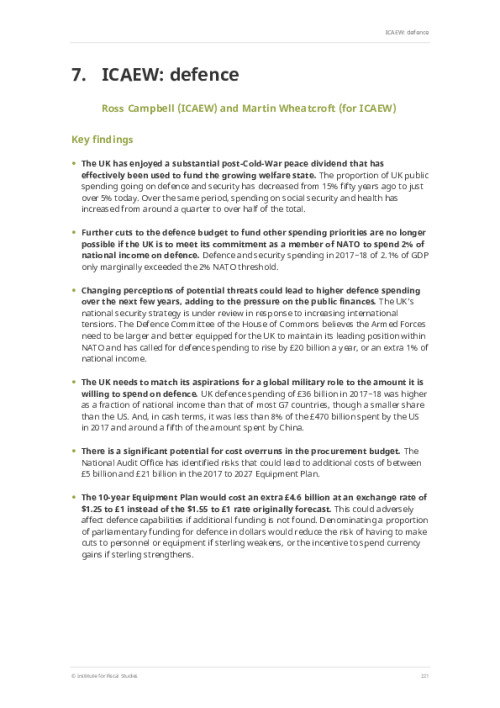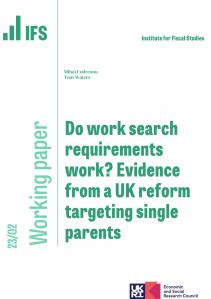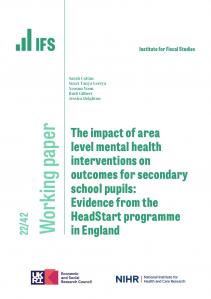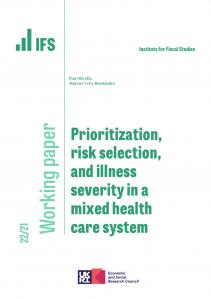Ross Campbell is Director, Public Sector at the Institute of Chartered Accountants in England and Wales (ICAEW) and Martin Wheatcroft is a Fiscal Accountant and the Managing Director of Pendan Fiscal Analysis.
In 2017–18, the UK spent £43 billion on defence and security, just meeting the target among NATO members to spend 2% of national income on defence. However, there are growing questions as to whether this level of spending is sufficient to provide for the defence of the UK, with calls from the Defence Committee of the House of Commons and the Secretary of State for Defence to increase spending. These questions reflect the UK’s changing strategic position amid greater international tensions, together with significant cost pressures on the defence budget that could mean cutting existing defence capabilities if not addressed.
This chapter considers how the evolving defence and security position may affect defence resources and spending, and the pressure that this could put on the public finances. We provide an overview of the UK’s defence arrangements in light of the ongoing update to the 2015 National Security Strategy and Strategic Defence and Security Review (the 2015 SDSR) and explore what that might mean for defence spending and for the public finances. We also analyse the finances and financial management of the Ministry of Defence. We highlight several risks going forward, including the management of multi-year complex programmes to procure new equipment and the currency and other risks of multi-year capital programmes.
Key findings
- The UK has enjoyed a substantial post-Cold-War peace dividend that has effectively been used to fund the growing welfare state. The proportion of UK public spending going on defence and security has decreased from 15% fifty years ago to just over 5% today. Over the same period, spending on social security and health has increased from around a quarter to over half of the total.
- Further cuts to the defence budget to fund other spending priorities are no longer possible if the UK is to meet its commitment as a member of NATO to spend 2% of national income on defence. Defence and security spending in 2017–18 of 2.1% of GDP only marginally exceeded the 2% NATO threshold.
- Changing perceptions of potential threats could lead to higher defence spending over the next few years, adding to the pressure on the public finances. The UK’s national security strategy is under review in response to increasing international tensions. The Defence Committee of the House of Commons believes the Armed Forces need to be larger and better equipped for the UK to maintain its leading position within NATO and has called for defence spending to rise by £20 billion a year, or an extra 1% of national income.
- The UK needs to match its aspirations for a global military role to the amount it is willing to spend on defence. UK defence spending of £36 billion in 2017–18 was higher as a fraction of national income than that of most G7 countries, though a smaller share than the US. And, in cash terms, it was less than 8% of the £470 billion spent by the US in 2017 and around a fifth of the amount spent by China.
- There is a significant potential for cost overruns in the procurement budget. The National Audit Office has identified risks that could lead to additional costs of between £5 billion and £21 billion in the 2017 to 2027 Equipment Plan.
- The 10-year Equipment Plan would cost an extra £4.6billion at an exchange rate of $1.25 to £1 instead of the $1.55 to £1 rate originally forecast. This could adversely affect defence capabilities if additional funding is not found. Denominating a proportion of parliamentary funding for defence in dollars would reduce the risk of having to make cuts to personnel or equipment if sterling weakens, or the incentive to spend currency gains if sterling strengthens.
Figure. UK defence and security spending over time
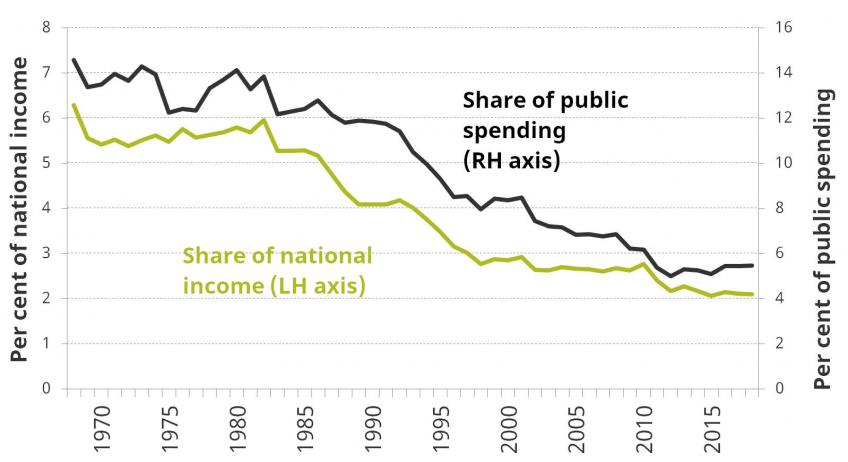
Source: NATO; Office for Budget Responsibility.
